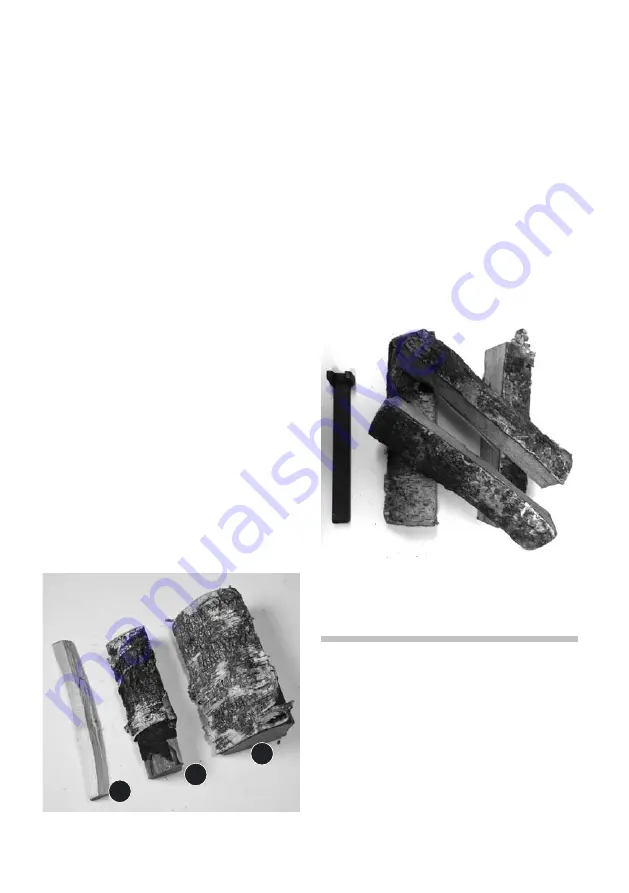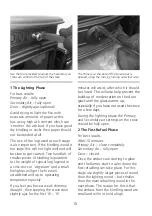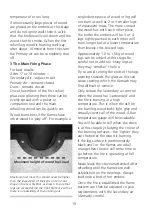
17
occasionally ridding or removing the
surplus ash.
The end grain of the wood produces
more of the remaining moisture and
gases so whenever possible point the
log ends away from the glass to help
keep the glass clean.
The Fuel Load
Ideally the logs should be
approximately 225 – 250mm (9” – 10”)
long and a typical fuel load should
weigh 1.0 – 1.5kg (2.2lb – 3.3lb).
To get the best out of your stove,
you will need three different thick-
nesses of wood log as you build the fire
through each lighting phase:
A Kindling
This is generally finely
chopped wood, approximately 5 to
10mm thick (1/4” to 1/2”) from your
supply of logs. Alternatively use dried
twigs or small branches which have also
been fully seasoned
B Lighting Logs
These are slightly
bigger diameter logs, approximately 25
to 50mm (1” to 2”)
The recommended maximum fuel load: Photo
shows a typical loosely stacked fuel load of
approximately 1.5kg of fully seasoned wood logs
approx 250mm (9”) long by 75 – 100mm thick
A
B
C
C Refuelling Logs
These should be
approximately 75 to 100mm thick (3”
to 4”). Bigger logs should be split down
to this size
Lighting a wood fire
The main difference between smoke
and flame is temperature, so when
lighting a fire you need to get the
temperature in the firechamber as high
as possible as quickly as possible. This
is also critical in creating a good ‘draw’
within the flue system, especially when
it is particularly cold outside.
When flue gas temperatures are below
120°C, creosote tars form within the
gases and the fire will be smoky and
burn with a dull orange flame. Burning
the stove like this for a sustained period
will create unnecessary smoke and not
be good for the chimney or flue system.
Summary of Contents for HF217-SE Baby Gabriel
Page 2: ......
Page 7: ...7 GENERAL DIMENSIONS 414 435 555 95 134 345 134 125 ø All dimensions are in mm ...
Page 43: ......
















































